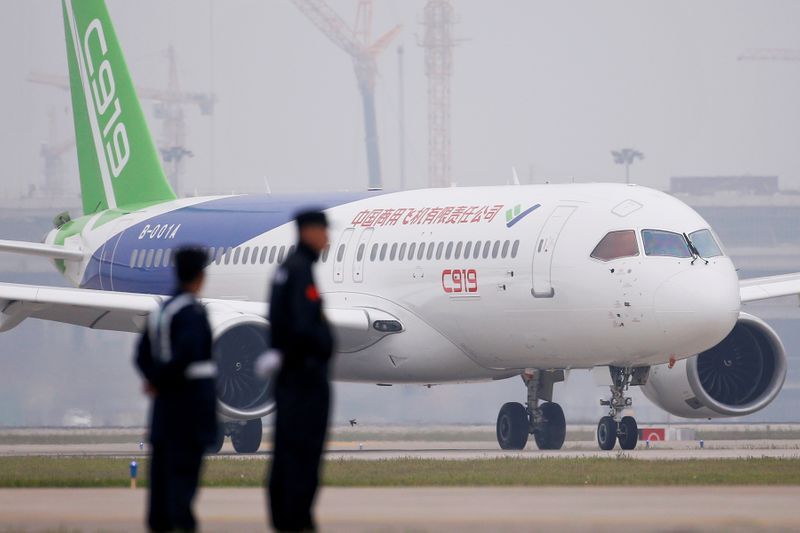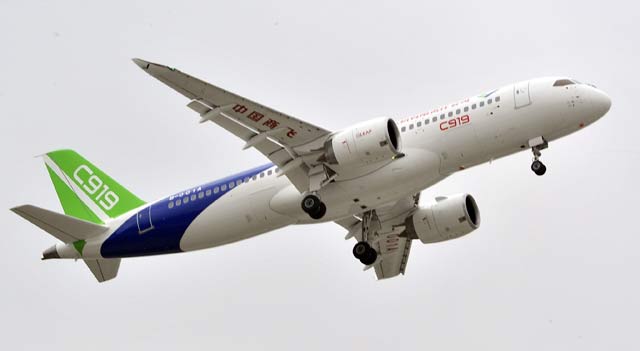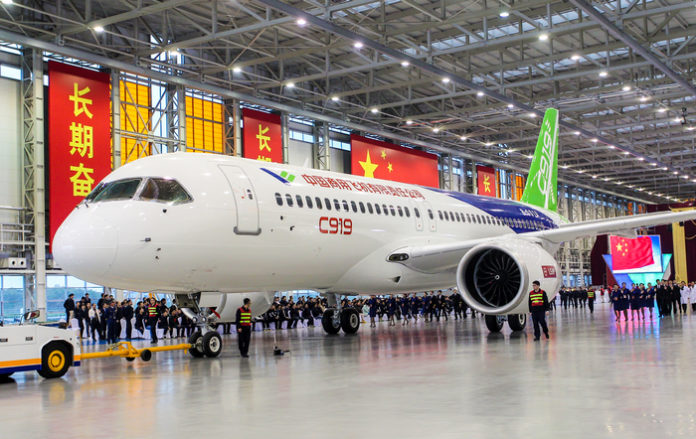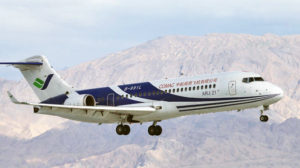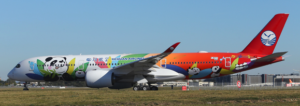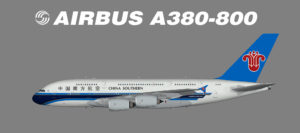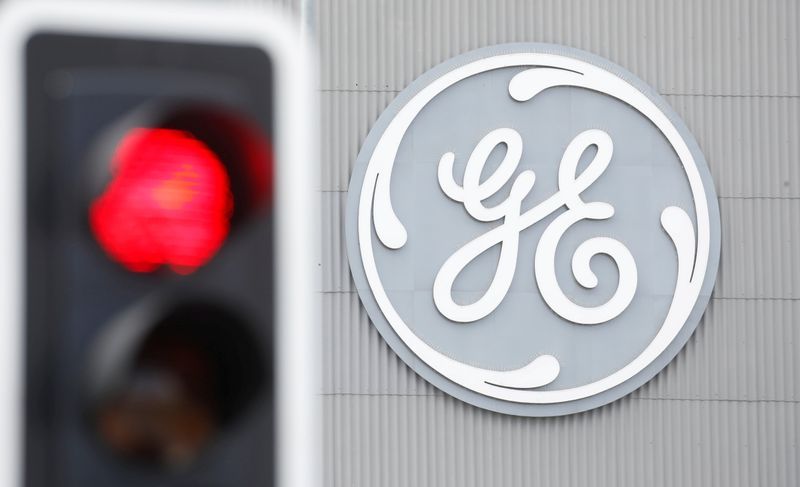
(Reuters) – The U.S. government is considering whether to stop General Electric Co from continuing to supply engines for a new Chinese passenger jet, according to people familiar with the matter, casting uncertainty over China’s efforts to enter the civil aviation market.
The potential restriction on the engine sales – possibly along with limits on other components for Chinese commercial aircraft such as flight control systems made by Honeywell International Inc – is the latest move in the battle between the world’s two largest economies over trade and technology.
The issue is expected to come up at an interagency meeting about how strictly to limit exports of U.S. technology to China on Thursday and at another meeting with members of President Donald Trump’s Cabinet set for Feb. 28, sources said.
The White House and the U.S. Commerce Department, which issues licenses for such exports, declined to comment, as did a GE spokeswoman. The departments of Defense, State, Energy and Treasury did not respond to requests for comment.
For years, the United States has supported American companies’ business with China’s budding civil aviation industry.
The government has provided licenses that allow those companies to sell engines, flight control systems and other components for China’s first large commercial aircraft, the COMAC C919. The narrow-body jet has already engaged in test flights and is expected to go into service next year. COMAC is an acronym for Commercial Aircraft Corp of China Ltd.
But the Trump administration is weighing whether to deny GE’s latest license request to provide the CFM LEAP-1C engine for the C919, people familiar with the matter said, though GE has received licenses for the LEAP engines since 2014 and was last granted one in March 2019.
The CFM LEAP engine is a joint venture between GE and France’s Safran Aircraft Engines. The proposal to halt the deliveries of the engines was also reported on Saturday by the Wall Street Journal.
Safran did not immediately respond to a request for comment, and French government officials could not be reached for comment.
Aside from aircraft engines, flight control systems are up for discussion at the February meetings. Honeywell International has received licenses to export flight control systems to COMAC for the C919 for about a decade, and one was approved in early 2020, according to a person familiar with the matter.
But future permission for such sales for COMAC’s passenger aircrafts may be up for debate. Honeywell also has been seeking a license for flight control technology to participate in the development of the C929, China’s planned wide-body jet venture with Russia, the person said.
The flight control system operates moving mechanical parts, such as the wing flaps, from the cockpit.
A spokeswoman for Honeywell declined to comment.
An aerospace trade group official said his organization would like to weigh in on any policy shifts.
“If there are any changes, we would hope they would engage with us, as they’ve done before,” said Remy Nathan, vice president for international affairs at the Aerospace Industries Association.
At the heart of the debate over a possible crackdown on the sale of U.S. parts to China’s nascent aircraft industry is whether such shipments would fuel the rise of a serious competitor to U.S.-based Boeing Co or boost China’s military capabilities.
People familiar with the matter said some administration officials are concerned the Chinese could reverse engineer some items, though others say an abundance of LEAP engines in China has not brought that about to date.
If the United States were to move ahead with the measure, one person familiar with the matter said, China could retaliate by ordering more planes from Airbus SE , rather than crisis-hit Boeing, which relies on China for a fourth its deliveries.
The Trump administration’s meetings about technology issues also are set to include a discussion of whether to impose further restrictions on suppliers to Huawei Technologies, the world’s largest telecommunications equipment maker, which is on a U.S. trade blacklist.
(Reporting by Karen Freifeld and Alexandra Alper; additional reporting by Tim Hepher in Paris; editing by Jonathan Oatis)
